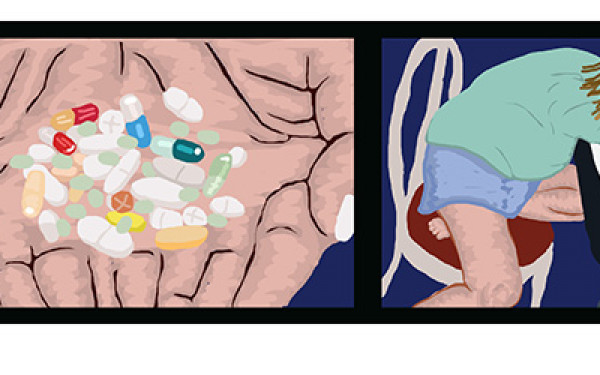Get ‘Em High
How University Students Use Illicit Drugs to Get By
The stench of body odour and despair fills the nostrils of tortured individuals scurrying to and fro. Their skin is sallow and pale, their eyes as red as the blood moon. This is not a vision of the apocalypse, but a glimpse into midterm season at Concordia.
Students are cramming, regretting their neglect of class readings, practicing problems and reviewing tutorials they’ve ignored in recent weeks. As a result, some students are turning to the illicit use of study drugs to catch up.
Adderall, Concerta, Ritalin, Biphentin and Vyvanse—these powerful stimulants stabilize dopamine levels in the brain, providing focus and tranquility. Many of them are used for treating cases of ADHD and ADD. However, students who do not suffer from hyperactivity are using these drugs to study, apparently gaining the ability to sit for hours and absorb information at a rapid pace.
“It actually [has] the opposite [effect] in people who do not have behavioural disorders, creating hyperactivity by flooding the brain with dopamine,” said pharmacist Andre Desjardins.
“It actually [has] the opposite [effect] in people who do not have behavioural disorders, creating hyperactivity by flooding the brain with dopamine.” — Andre Desjardins, pharmacist
He stressed that stimulants don’t increase concentration for everyone, and the effects differ among individual users.
“Since dopamine levels are affected, it impacts the reward system in our brains, increasing chances of dependence,” said Karina Cistera, a fourth year pharmacy student at Université de Montréal. “Tolerance for these stimulants increases over a period of time, meaning that users must increase their dosage to feel the same effects.”
Both health professionals mentioned a ‘crash’ or ‘comedown’ which users experience when dopamine levels are returning back to normal. This crash is usually characterized by an array of symptoms including fatigue, irritability, and in some instances, depression.
Stimulants should never be mixed with any other substances including alcohol, marijuana or even caffeine. As well, interactions with other prescriptions such as antidepressants or anxiety medications can lead to fatal complications, demonstrating the true potency of these drugs.
Furthermore, there’s no published research in the scientific community linking study drugs with higher grades. Although they may provide a degree of concentration for a short amount of time, they don’t increase the cognitive ability—you’re not going to suddenly morph into the top student and produce a genius paper while on Ritalin.
Due to growing demand, there is a market tailored specifically to students. Dealers have found a cash cow, some asking for $20 per capsule of Adderall. These are powerful drugs with serious effects, and it’s illegal to purchase, sell or distribute them in Canada. Amphetamine, the substance found in Adderall, is the parent compound of methamphetamine, more commonly known as meth.
The security department at Concordia refused to acknowledge if there had been any cases of study drug overdoses or distribution of such substances on campus, even with midterm pressures rising.
“I have to get a minimum of a B- in my accounting classes, or else I’ll have to retake them,” an occasional user of Concerta told The Link. Another student added that many honours programs are highly competitive and require a GPA above a 3.0. The pressures of academia, combined with this bloodthirsty, Hunger Games-like environment drive many towards study drugs.
These drugs are not tiny miracles that will answer academic prayers. Rather, they are quick fixes to the stresses that students face in university.
For advice on how to navigate the perils of university, including tips on organization and stress management, visit the Student Success Centre at H-440 at the SGW campus.

_900_675_90.jpg)
_600_832_s.png)




_600_375_90_s_c1.jpg)